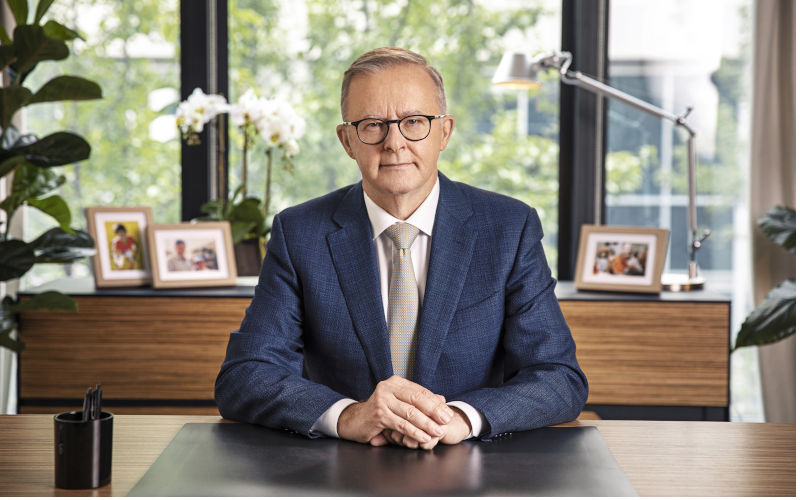Senior political office is a hazardous place where job security can be fortuitous.
A few jump before things sour although the temptations to hang on are strong and the ends for those who do are often fraught with bitterness, anger and recrimination.
This stew may be more risky now for Prime Ministers as politics has become more presidential with commensurate expectations they will carry much of any blame.
Prime Minister Albanese has been vulnerable in these currents.
His ascension was welcomed by many because he was not his predecessor – such welcomes have short half-lives. Now his critics are much at play laying into his flat-footed advocacy and policy timidity. It’s allowed that he’s been decent enough and has done some good things yet his government has lacked the verve and bracing agendas of Whitlam, Hawke and Keating. Where boldness has been his friend, say with the nuclear submarines and the Voice referendum, he’s alienated many of his backers and conceded ground to his political opponents.
Those who say Albanese’s not grown into the job are missing the point. The point is that being Prime Minister has played to his weaknesses and diminished his strengths. Would the Albanese of old not been more alert to the political jeopardy of buying an expensive coastal bungalow in the middle of a housing crisis?
In all, he may not have been well served by the grandiose staffing of his office and his department.
Excluding electorate and office support staff and departmental liaison officers, Albanese now has more than 60 people in his office – 4 Principal Advisers, 42 Senior Advisers six of whom are Senior Media Advisers, 8 Advisers and 7 Assistant Advisers.
While the numbers varied slightly over time, Whitlam had around 9 staff at comparable levels and Hawke around 15. [These statistics were provided by Mr Michael Delaney who was Whitlam’s Senior Advisor and ultimate Chief of Staff and Mr Jeff Townsend who was Hawke’s Senior Private Secretary.]
Of course things have changed but it’s implausible to think they’ve changed sufficiently to warrant an increase in ministerial advisers of more than 500% for a government with a policy program dwarfed by Whitlam’s or Hawke’s. How any Minister’s office can work effectively with so many Senior Advisers is uncertain, it bringing risks of inefficiency, slowness, the averaging down to the lowest of common denominators and excessive political second-guessing of disinterested advice from the public service.
Could the half dozen Senior Media Advisers have been responsible for reducing many of Albanese’s scripted public utterances to leaden platitudes and left him unable to make any case for either the Voice referendum or the nuclear submarines?
Those thinking the boost in personnel in the Prime Minister’s office might reduce the load and staff in the Department of the Prime Minister and Cabinet, must think again. Its staffing has grown topsy-like.
Prime Minister Whitlam was supported by a department with 3 Deputy Secretaries, 8 First Assistant Secretaries plus the Priorities Review Staff and with a total complement of around 600, 35 of whom were located in the States.
Prime Minister Albanese has a department composed of 6 Deputy Secretaries, 21 First Assistant Secretaries and a total complement of around 1300, all of whom are apparently located in Canberra.
The reasons for part of the increase in departmental staffing may be structural although the portion is not easy to identify. The reasons for the rest are elusive while the top heaviness of the organisation is inexplicable.
Whatever, the general picture is clear – in the last 50 years there has been a prodigious increase in the number of staff supporting the Prime Minister both in his personal office and in his Department.
How are they all doing?
The natural and reasonable opacity of the Prime Minister’s office largely shields it from assessment.
The Department’s self-assessment, if one backed by sundry low-response rate surveys of those who rely on it, is glowing. In its annual report for 2022-23, it claims to have achieved benchmarks in 14 areas and partially achieved in 3. How reassuring things are below the surface is less clear. For example, it’s claimed to have succeeded in establishing “a new Public Service Reform Agenda”. In a sense that’s partially true (that agenda is basically set by the government) but whatever it is, is not much to write home about – conducting a survey of “trust” in the public service, trialling capability reviews of agencies, piloting an “in-house consulting model” and proposing modest amendments to the Public Service Act that avoided major, pressing needs.
So what is to be made of the more than abundant increase in support for the Prime Minister in his office and department?
All Prime Ministers land in the soup every now and again but the platoons of his high-level assistance have not been able to save Mr Albanese from being in it more than he probably would like. Might fewer Senior Media Advisers have helped steer him away from consoling no one and offending just about everyone in his recent statement about the 7 October atrocity and its appalling aftermath?
It would be worth testing the hypothesis that the law of diminishing returns/variable proportions might be tripping the PM up – that is to say, by increasing the number of staff he’s decreasing his marginal output. That could be tested by reducing the number of his advisers and the number of Deputy and First Assistant Secretaries in his department by 25%. If that were to increase the quality and volume of his marginal output, a further reduction of 15% might be sufficient to bolster the ALP’s prospects in the next election. And Mr Albanese might reflect that Whitlam won an election as Prime Minister with nine advisers and Hawke won three with fifteen.
Paddy Gourley is a superannuated Commonwealth public servant.
